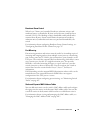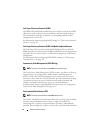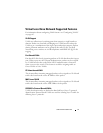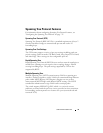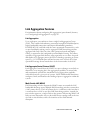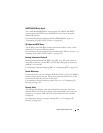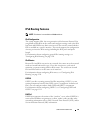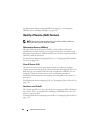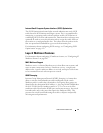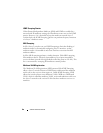
Switch Feature Overview 81
Link Aggregation Features
For information about configuring link aggregation (port-channel) features,
see "Configuring Link Aggregation" on page 913.
Link Aggregation
Up to eight ports can combine to form a single Link Aggregation Group
(LAG). This enables fault tolerance protection from physical link disruption,
higher bandwidth connections and improved bandwidth granularity.
Per IEEE 802.1AX, only links with the same operational characteristics, such
as speed and duplex setting, may be aggregated. Dell Networking switches
aggregate links only if they have the same operational speed and duplex
setting, as opposed to the configured speed and duplex setting. This allows
operators to aggregate links that use auto negotiation to set values for speed
and duplex or to aggregate ports with SFP+ technology operating at a lower
speed, e.g., 1G. Dissimilar ports will not become active in the LAG if their
operational settings do not match those of the first member of the LAG.
Link Aggregate Control Protocol (LACP)
Link Aggregate Control Protocol (LACP) uses peer exchanges across links to
determine, on an ongoing basis, the aggregation capability of various links,
and continuously provides the maximum level of aggregation capability
achievable between a given pair of systems. LACP automatically determines,
configures, binds, and monitors the binding of ports to aggregators within the
system.
Multi-Switch LAG (MLAG)
Dell Networking switches support the MLAG feature to extends the LAG
bandwidth advantage across multiple Dell Networking switches connected to
a LAG partner device. The LAG partner device is oblivious to the fact that it
is connected over a LAG to two peer Dell Networking switches; instead, the
two switches appear as a single switch to the partner. When using MLAG, all
links can carry data traffic across a physically diverse topology and, in the case
of a link or switch failure, traffic can continue to flow with minimal
disruption.



